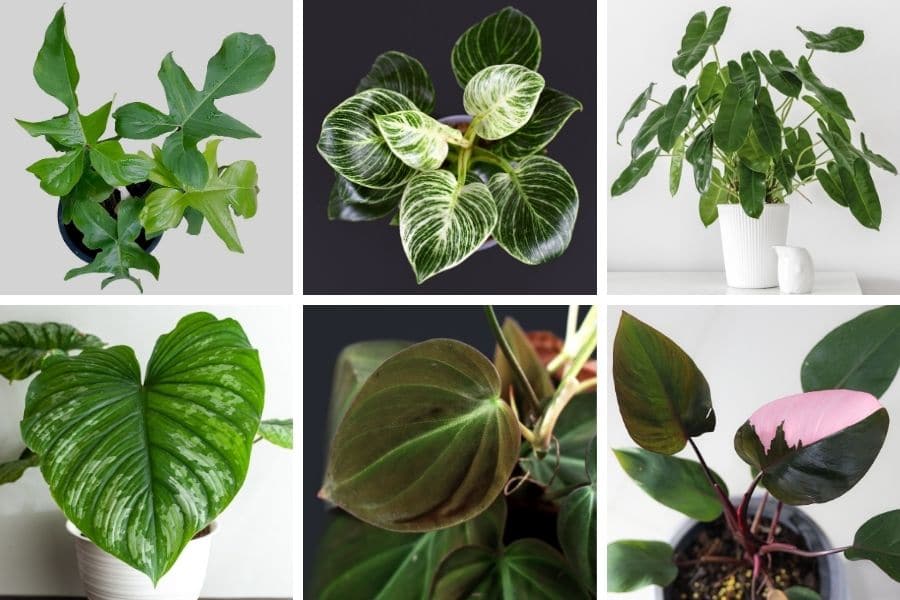Philodendron plants are American tropical plants that make your home or office beautiful.
There are two kinds of philodendrons which are climbing or hanging Philodendrons and Upright Philodendrons.
Most of the indoor plants are climbing vines that look beautiful as they hang in baskets.
They have heart-shaped leaves, which attract the audience. Upright ones have large leaves which take time to grow.
For any philodendron, some care measures are mandatory for a healthy plant.
The best part of these plants is one can have any type of them indoors because of the wide varieties across the globe.
Types of Philodendrons
1. Green Heartleaf Philopendron
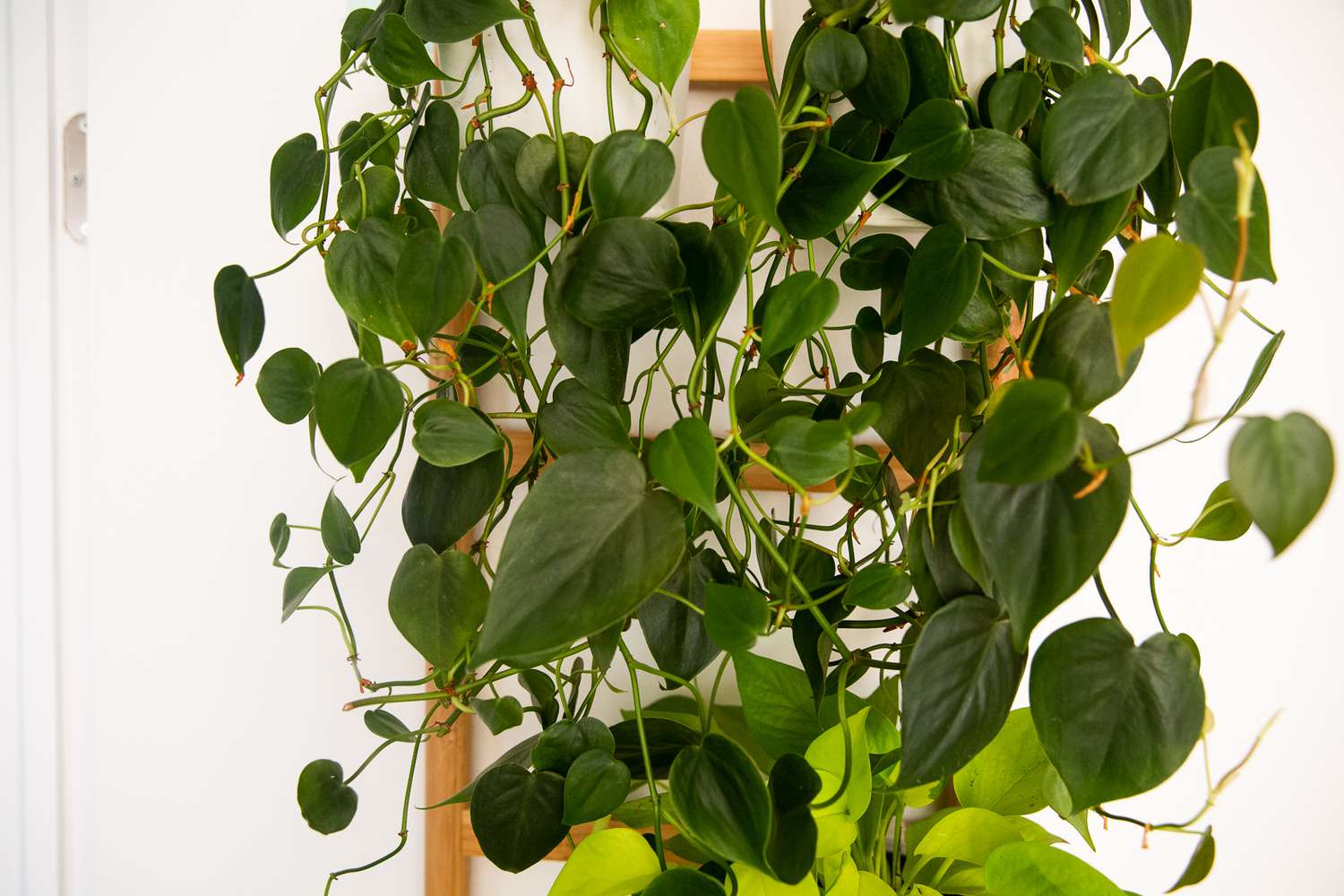
The Green Heartleaf Philodendron, also known as Philodendron scandens or Sweetheart Philodendron, is a climbing or hanging variety with charming heart-shaped leaves.
Its dark green foliage is a visual delight, and it thrives in low-light conditions, making it a perfect choice for bathrooms or shaded areas.
Picture of Philodendron in a bathroom can transform the ambiance with its beauty and fragrance. The leaves grow to about one foot (30 cm) in size.
Although it’s a fantastic species, some may prefer larger leaves, which this variety doesn’t offer.
2. Philodendron Brasil
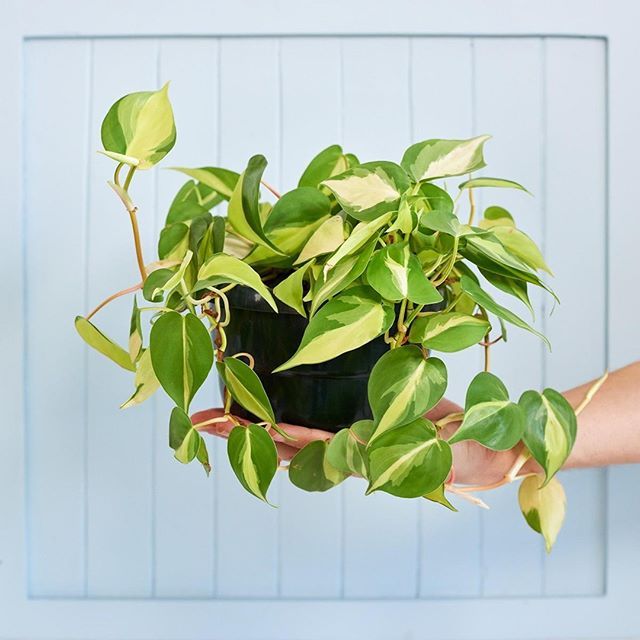
The Philodendron Brasil is a vibrant and fast-growing member of the heartleaf philodendron family.
Its striking heart-shaped leaves are adorned with lime green and lemon-colored patterns.
Stems display shades of greenish-pink, adding to its unique appeal.
This variety thrives in both low and medium light conditions, though it can also handle bright light.
Picture of Philodendron Brasil in a hanging basket adds a splash of color and charm to any indoor space.
Regular pruning can help maintain its bushy appearance and prevent it from growing too lengthy.
3. Philodendron Micans
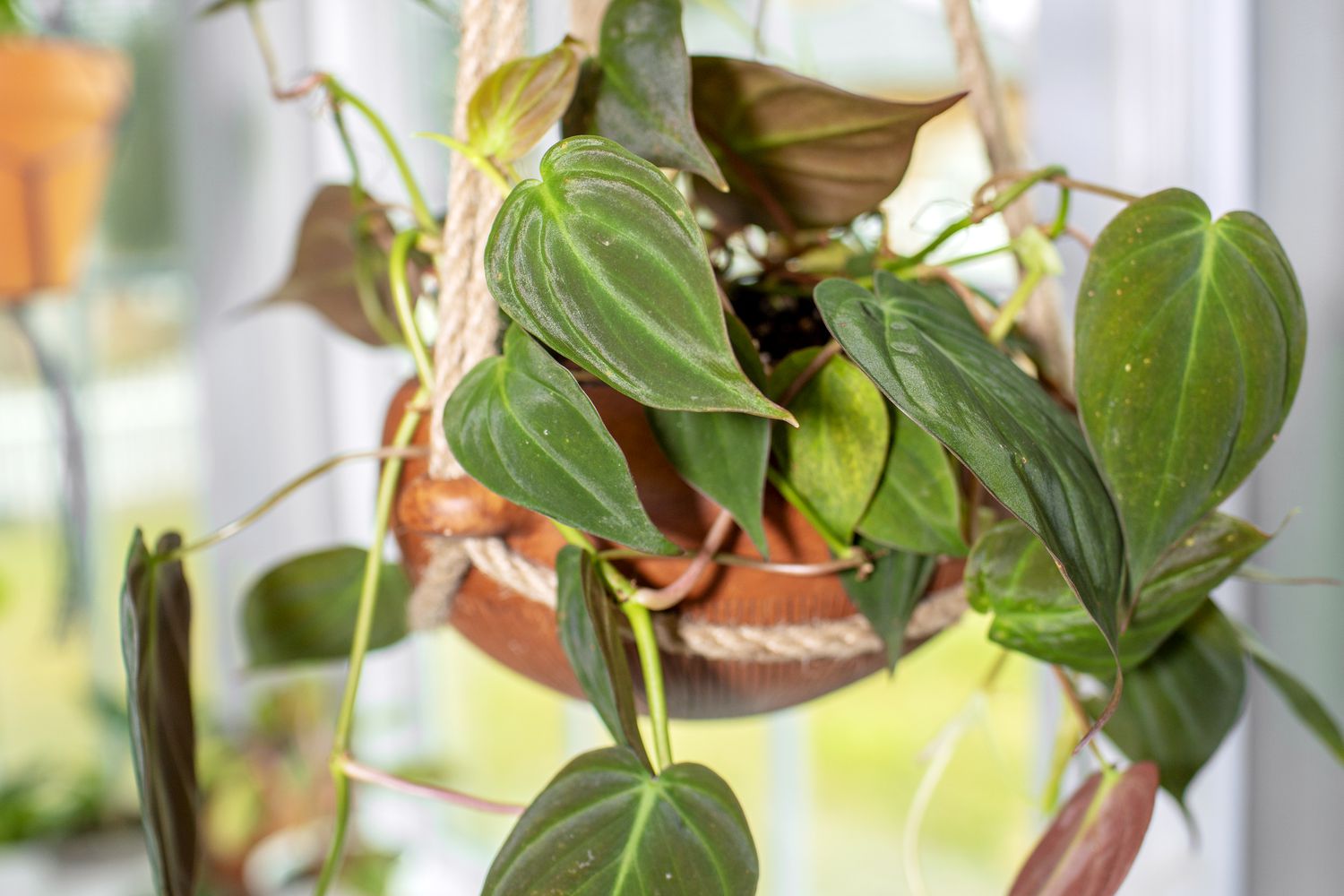
Also known as Velvetleaf Philodendron, Philodendron Micans is a trailing vine plant with heart-shaped leaves that boast a velvet-like texture.
The foliage exhibits a captivating iridescence, with colors shifting from dark green to light green or even bronze, depending on the angle and intensity of light.
To keep its color-changing behavior vibrant, it’s best to place this Philodendron in a hanging basket, away from direct sunlight, while providing bright indirect light.
Picture of Philodendron Micans showcases its stunning color variations and makes it an attractive addition to any indoor space.
4. Philodendron Xanadu
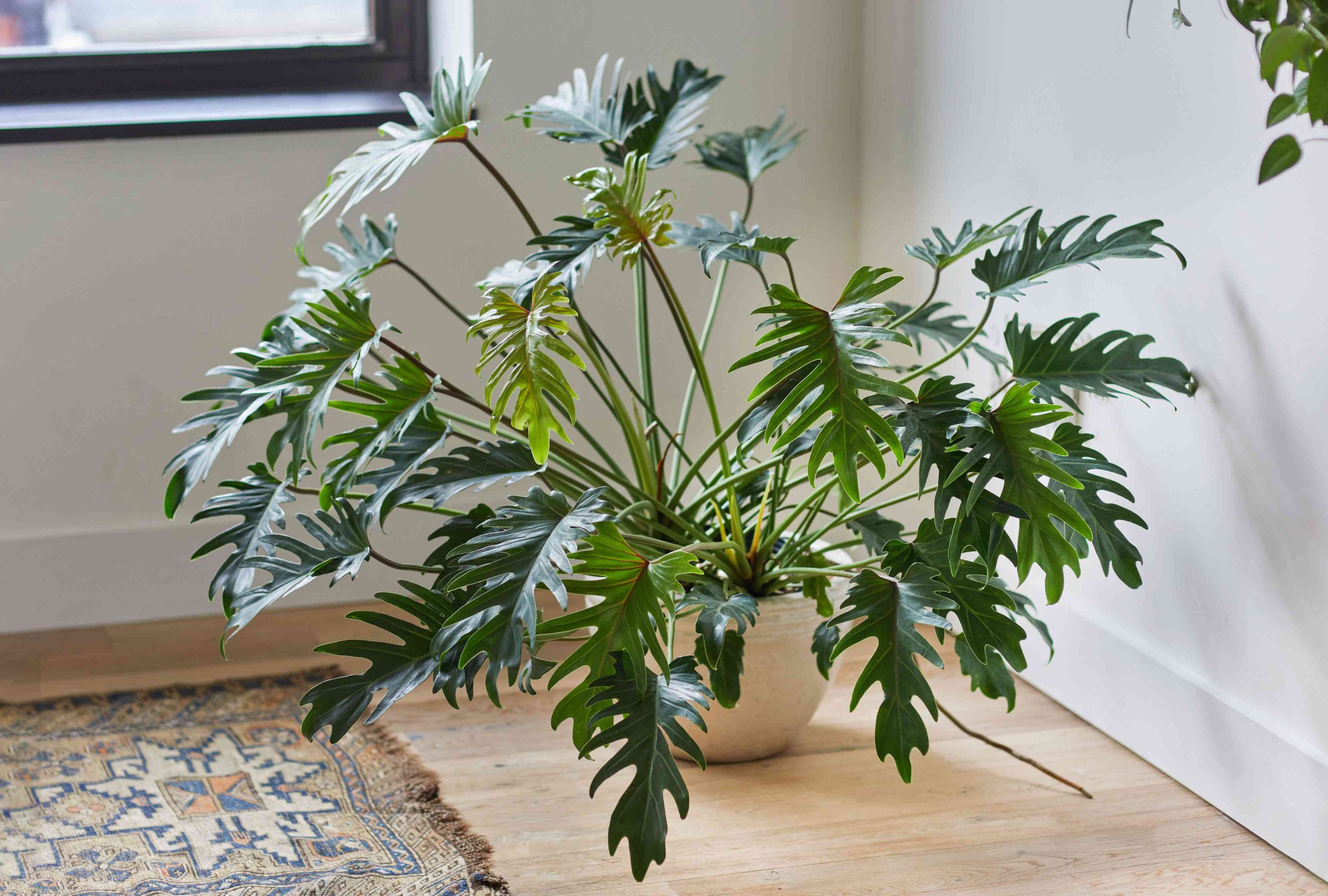
Philodendron Xanadu is a non-climbing indoor Philodendron that forms dense clumps of large, lobed leaves.
This tropical plant’s growth is limited by the size of the pot, making it ideal for indoor spaces.
Its glossy, green, lobed leaves add a touch of elegance and brightness to any room.
Philodendron Xanadu thrives in normal to medium light conditions and doesn’t require extensive care.
A picture of Philodendron Xanadu can capture the beauty of its mounded leaves and their glossy, green allure.
5. Philodendron Pink Princess
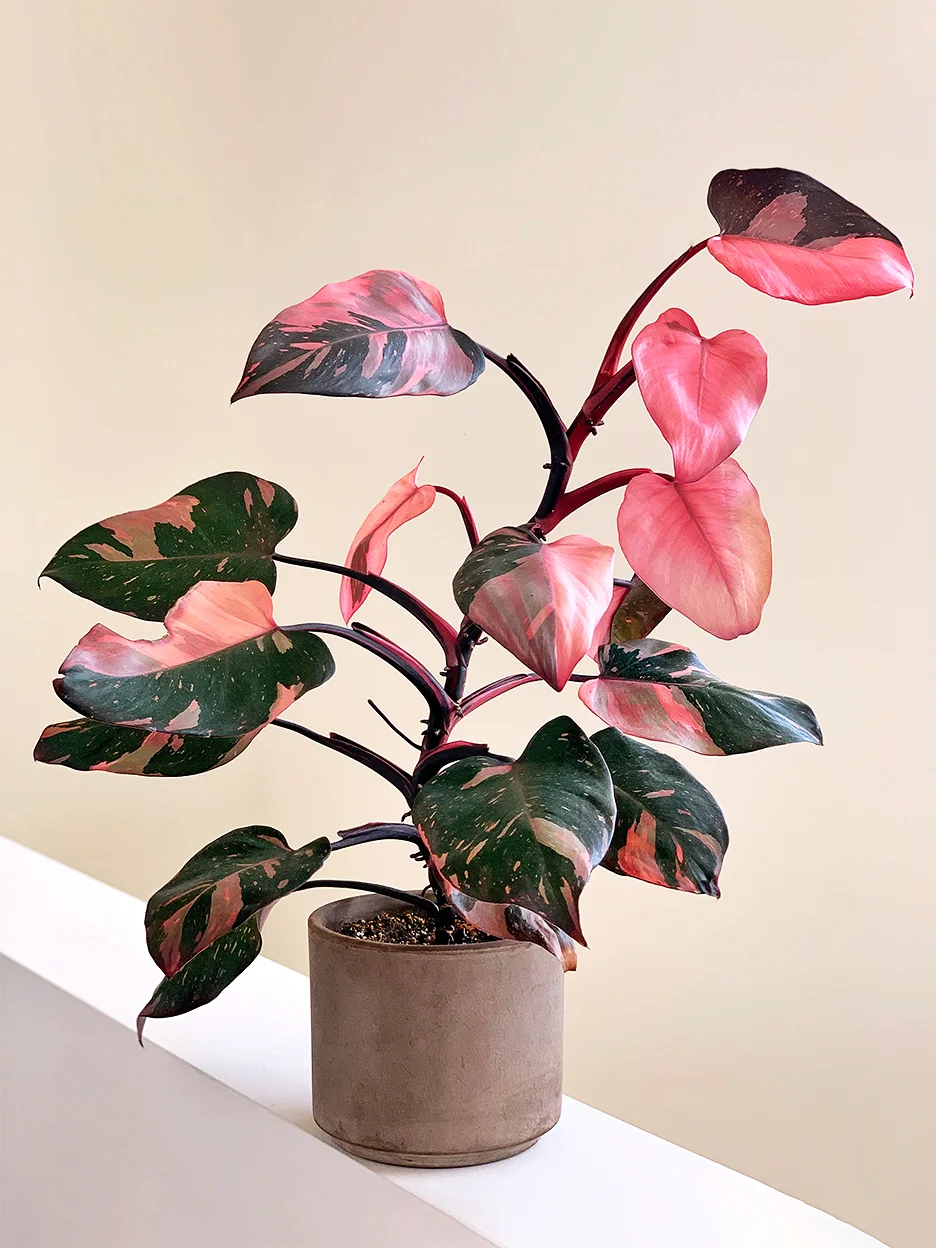
The Philodendron Pink Princess is a captivating indoor Philodendron variety known for its unique combination of green and pink leaves.
As it grows, it develops a bushy appearance through regular pruning, ensuring it remains vibrant and eye-catching.
With its heart-shaped leaves and reddish undersides, this type of Philodendron is a visual treat.
It thrives in bright indirect sunlight and should not be exposed to cold conditions.
It’s crucial to purchase the genuine Pink Princess variety, as a similar-looking type called “Pink Congo” turns black after six months, losing its charm.
A picture of Philodendron Pink Princess showcases its stunning and colorful foliage, making it a popular choice for plant enthusiasts.
6. Lacy Tree Philodendron
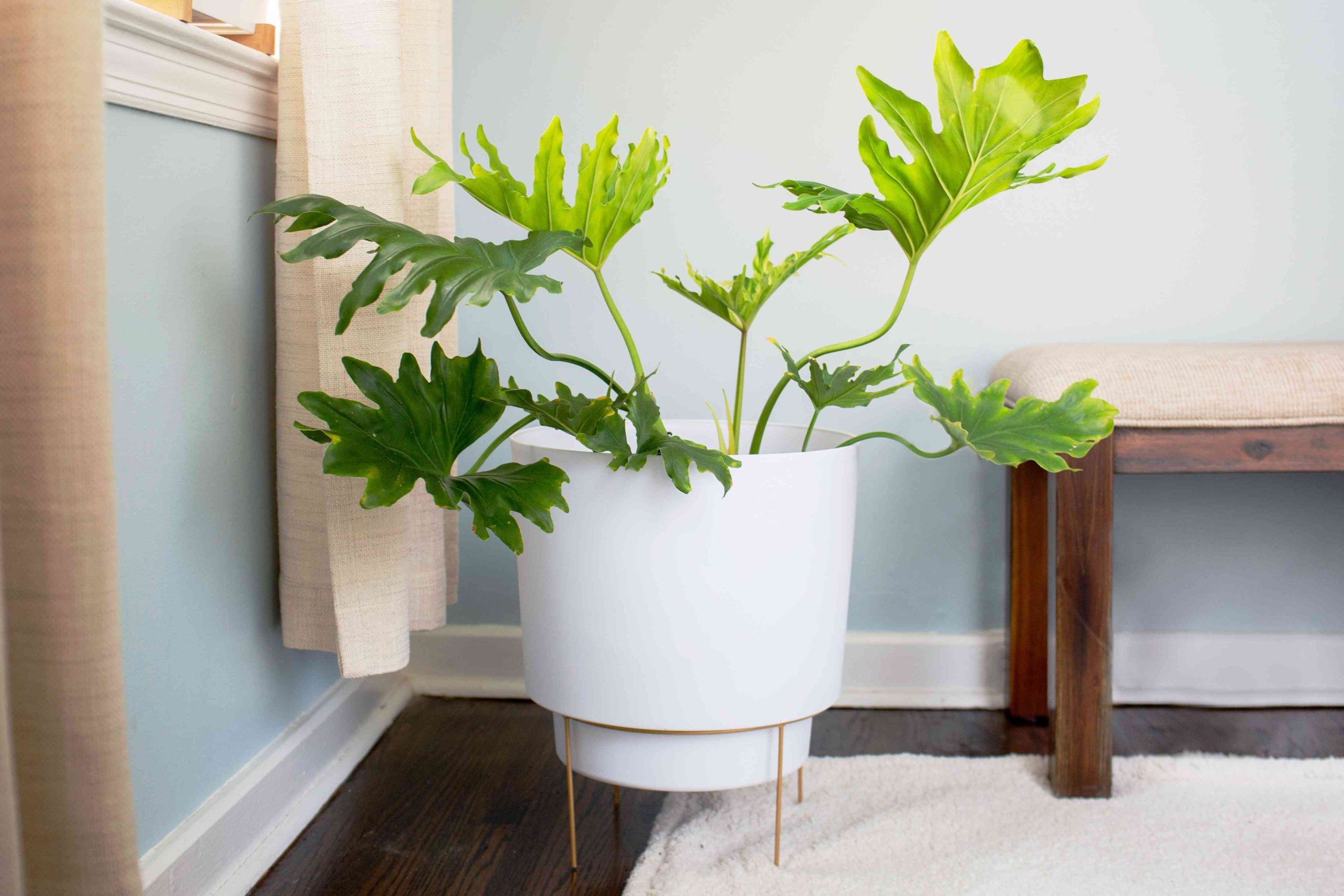
The Lacy Tree Philodendron, also known as Philodendron Selloum or Philodendron bipinnatifidum, belongs to the same species as the Xanadu Philodendron.
It bears a striking resemblance to its cousin but is a distinct cultivar.
The Lacy Tree Philodendron is characterized by its deeply lobed, large, shiny, and waxy leaves.
As it matures, its leaves can become huge and begin to droop, making it a spectacular addition to your indoor space.
This Philodendron type is also known by other names like Lacy Leaf Philodendron, Split-Leaf Philodendron, Horsehead Philodendron, Cut-Leaf Philodendron, or Fiddle-Leaf Philodendron.
Its unique foliage and impressive growth create a captivating picture of Philodendron that can transform any room into a tropical paradise.
7. Naugahyde Philodendron
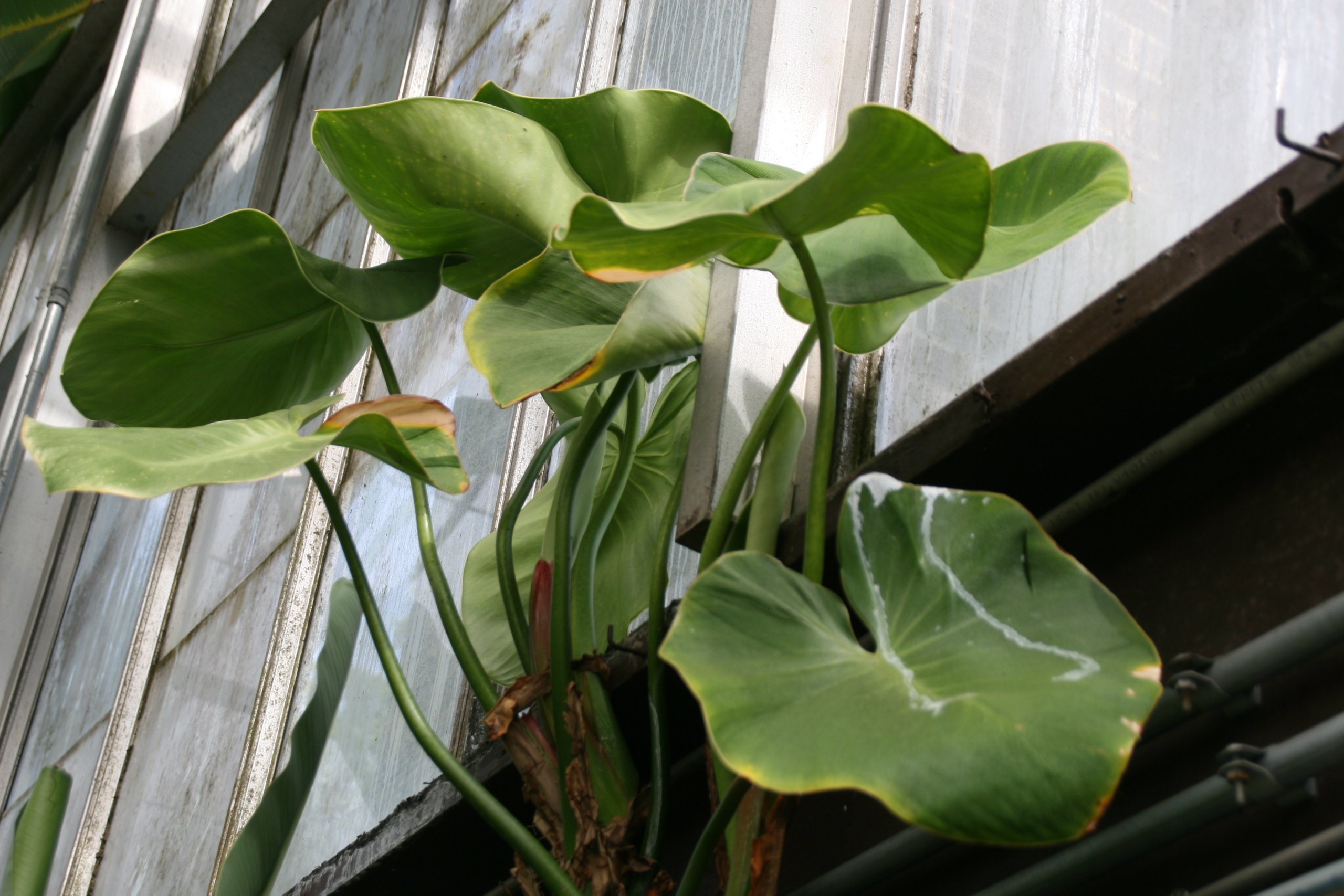
The Naugahyde Philodendron, also referred to as the Rugosum Philodendron, gets its name from its leaves, which have thick, leathery textures reminiscent of pigskin.
These heart-shaped, dark green leaves boast intricate patterns, making this Philodendron a unique addition to your collection.
Due to its distinct characteristics, the Naugahyde Philodendron is sometimes mistaken for an artificial plant.
This particular Philodendron type is rare and challenging to find in garden centers and online stores, adding to its allure.
The defining feature of this plant within the Araceae family is its large, green leaves.
The Naugahyde Philodendron creates a captivating picture of Philodendron with its robust and distinctive appearance, making it a coveted choice for enthusiasts seeking something truly extraordinary.
8. Blushing Philodendron
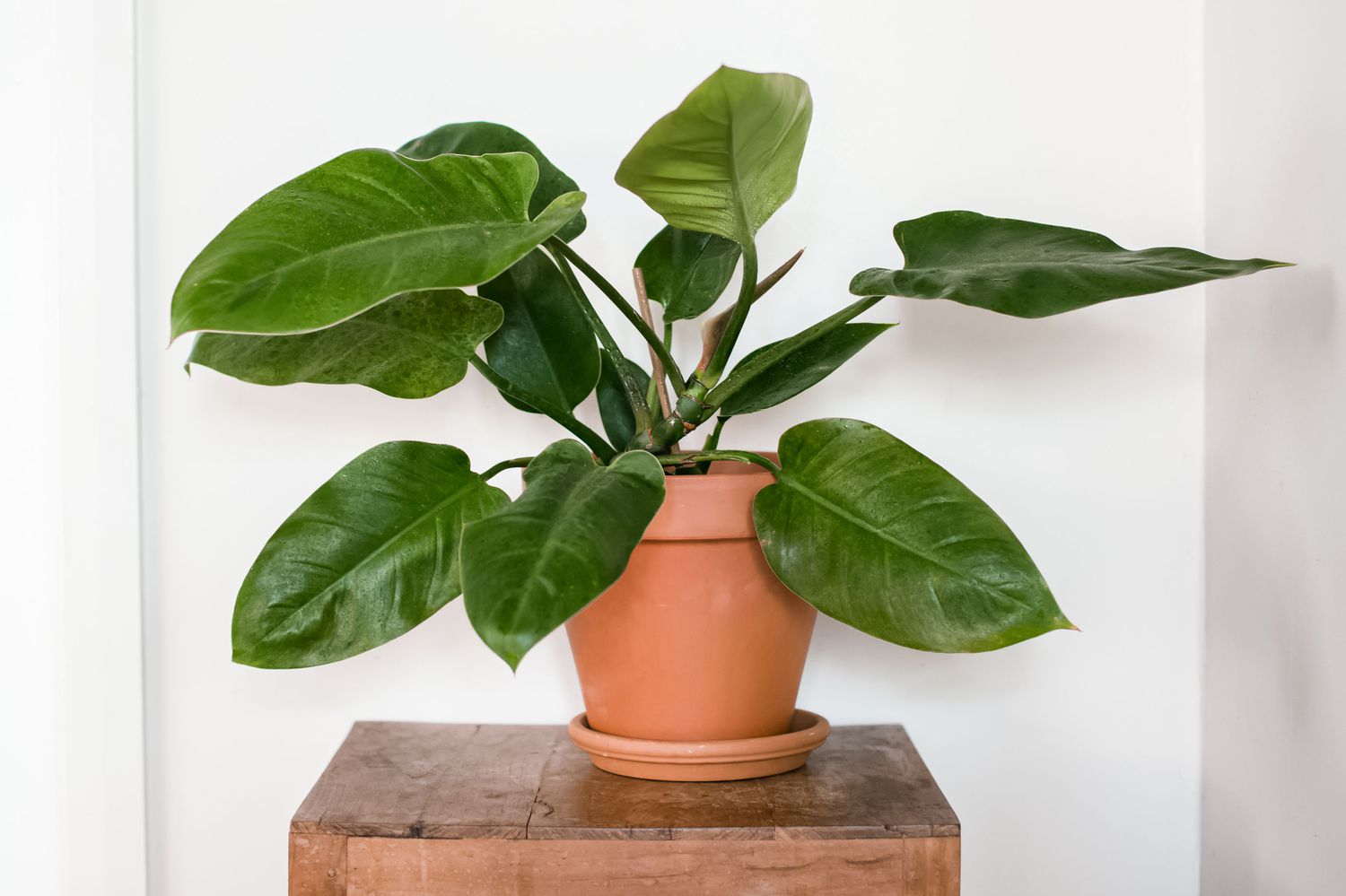
The Blushing Philodendron is a cultivar closely related to the Pink Princess Philodendron.
It features glossy, dark green foliage with arrowhead-shaped or elongated heart-shaped leaves.
What sets it apart is the reddish-purple underside of its large leaves, which gives it its name.
This climbing Philodendron can be grown in a hanging basket, and its stout, evergreen growth habit contributes to its reputation as the Red-Leaf Philodendron.
With its substantial stems and eye-catching leaves, it brings height and lush greenery to any room, creating a captivating picture of Philodendron that’s sure to impress.
9. Philodendron ‘Moonlight’
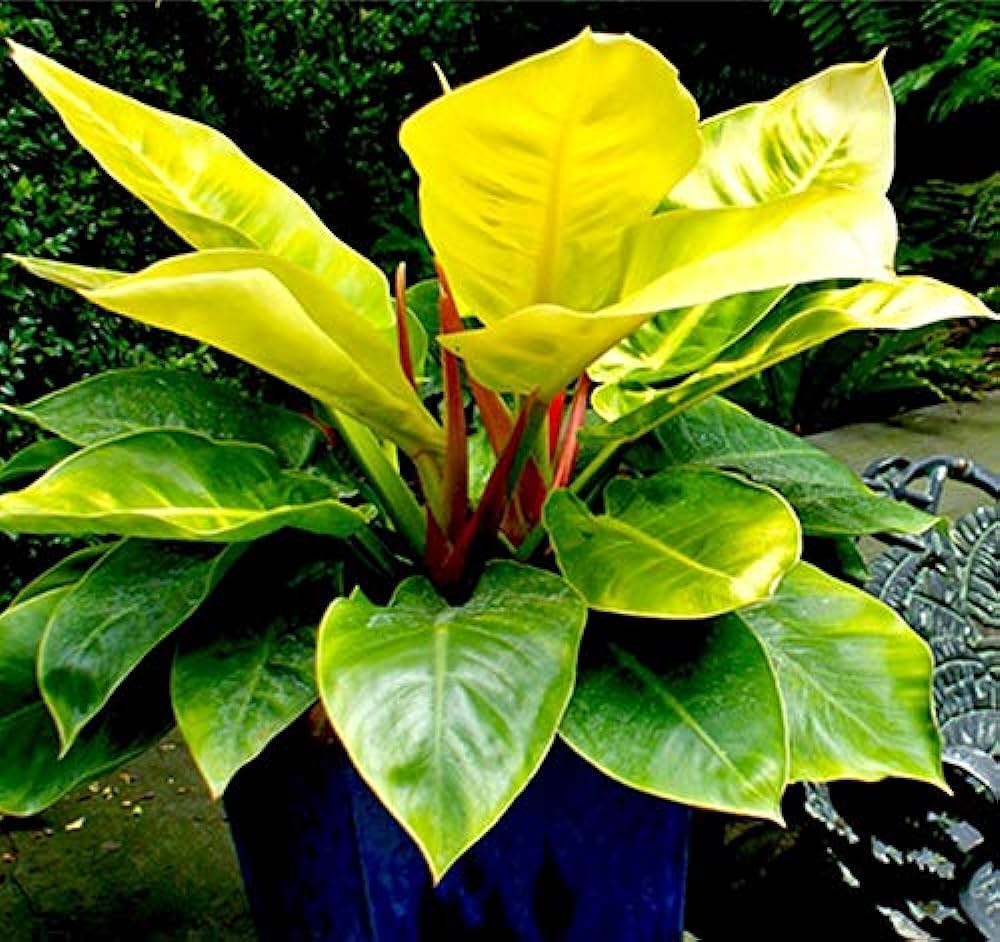
Philodendron ‘Moonlight’ is a hybrid plant that doesn’t exhibit vining or climbing tendencies.
It forms a clump and features bright lime green-colored leaves. The fluorescent nature of its leaves can brighten up any shaded corner of a room.
New leaves of this plant emerge sunny-yellow but gradually darken over time.
To maintain its vibrant appearance, place ‘Moonlight’ Philodendron on east or west-facing windowsills, away from direct sunlight.
This low-light-loving plant adds a unique glow to your indoor spaces, contributing to a captivating picture of Philodendron that’s both enchanting and distinctive.
10. Philodendron’ Congo Rojo’
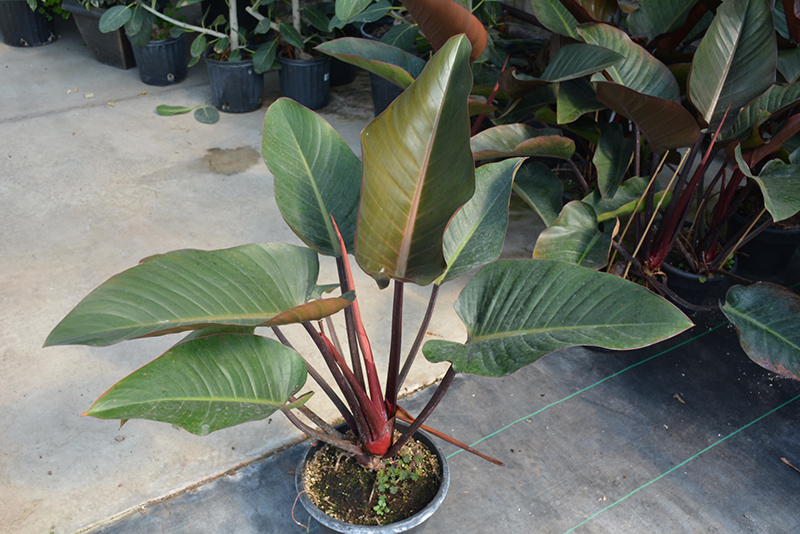
Philodendron ‘Congo Rojo’ is a relatively new Philodendron variety primarily found in warm climatic regions and tropical/subtropical areas.
Its large, elongated oval-shaped leaves come in various shades, including green, red, and burgundy. For indoor cultivation, it’s best suited to temperate climates.
In tropical and subtropical regions, this Philodendron thrives outdoors.
‘Congo Rojo’ belongs to the clumping type of Philodendrons, which means it doesn’t produce long, trailing vines but instead grows in a bushy manner.
Its stiff burgundy stems support large leaves, creating a captivating picture of Philodendron with a unique structure.
While it may be a bit challenging to find in garden centers, ‘Congo Rojo’ is worth the effort, bringing a touch of tropical beauty to your indoor spaces.
11. Philodendron Grazielae
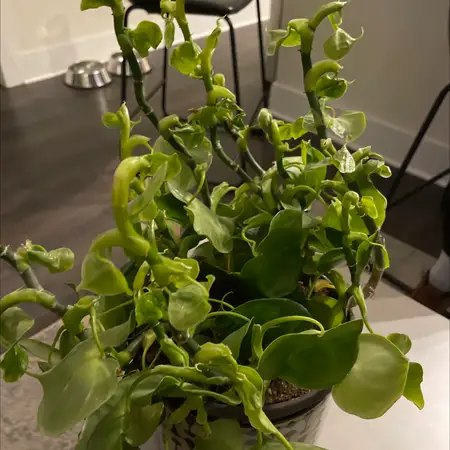
This trailing vine plant boasts thick stems and small, heart-shaped leaves that can brighten up any indoor space, whether hung in baskets or grown in containers.
Its glossy foliage adds a touch of elegance to your home, and you can enhance its beauty by regularly pruning unwanted or dead stems, giving it a bushy appearance that’s even more appealing in the picture of Philodendron.
12. Philodendron Prince of Orange
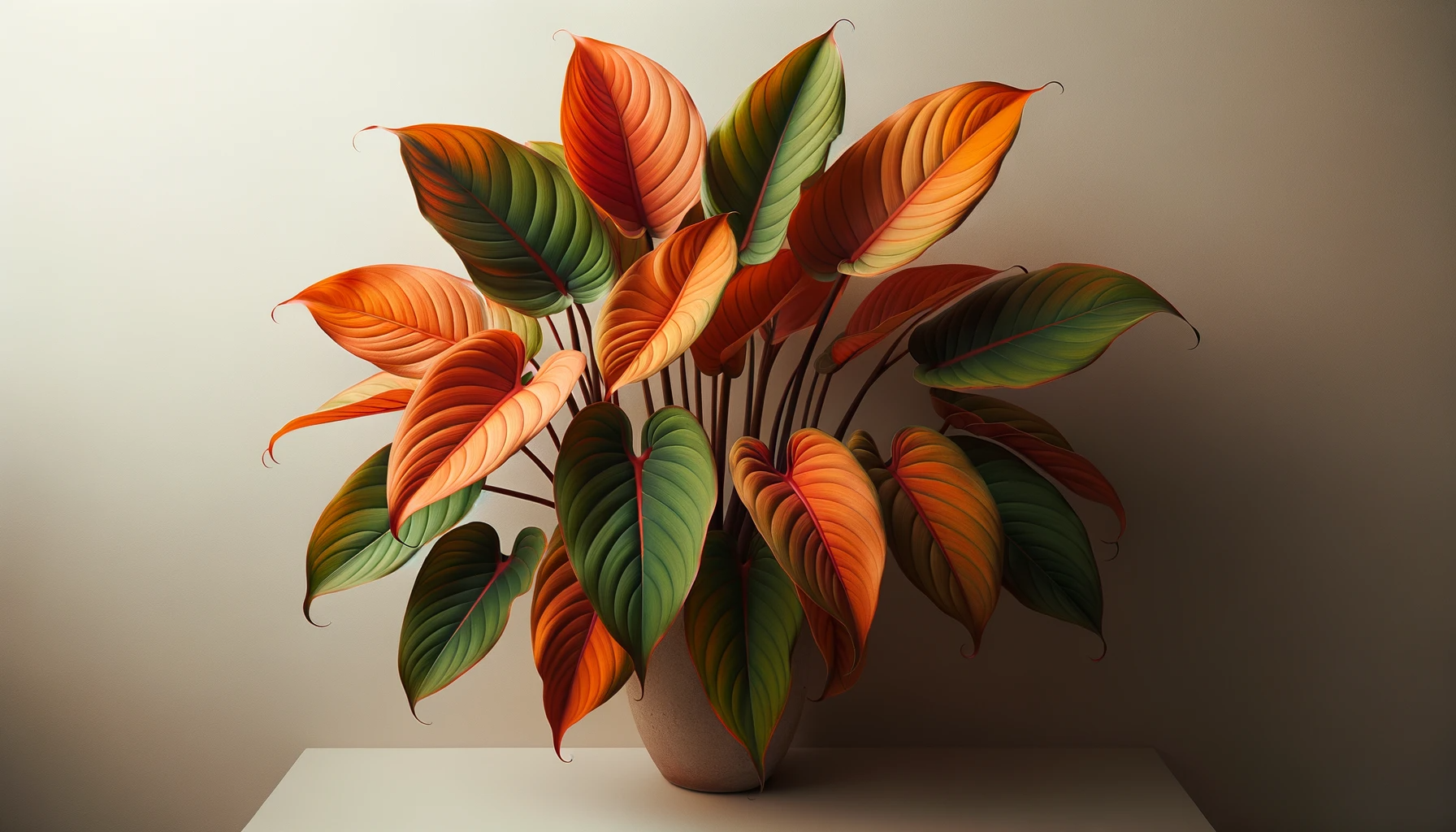
The Philodendron Prince of Orange earns its name from its large, coppery-orange leaves that gradually transition to a dark green hue as they mature.
This upright, non-climbing Philodendron type is known for its stunning foliage, which features a unique color combination and eye-catching leaves that grow closely together.
To showcase its vibrant appearance, place it in a well-lit area away from direct sunlight, ensuring a captivating picture of Philodendron that adds a dash of color and flair to your indoor space.
13. Philodendron Gloriosum
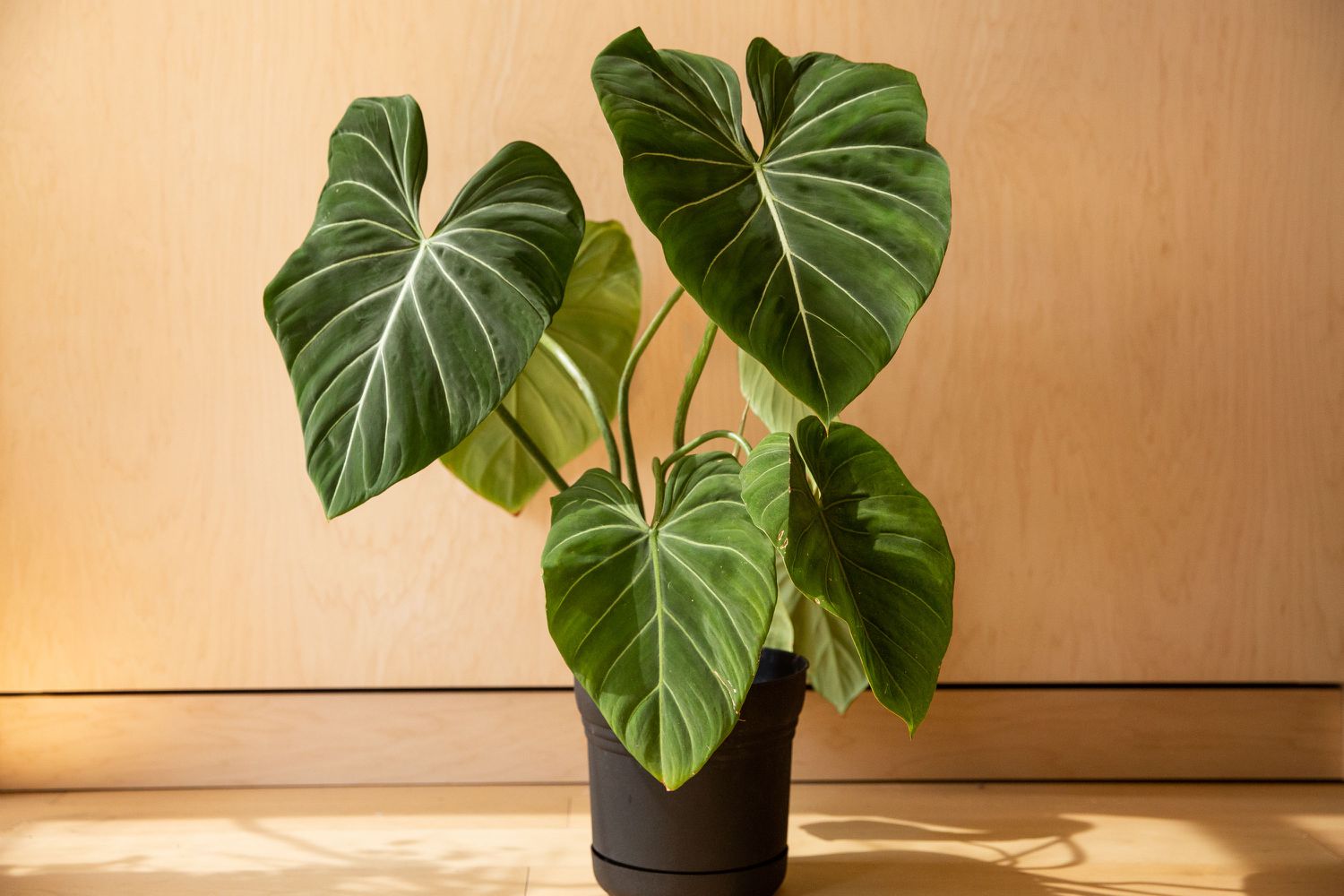
The Philodendron Gloriosum is a species known for its dark green leaves adorned with white veins.
With enormous, heart-shaped leaves that exhibit a mesmerizing blend of dark green shades with white margins and purple veins, this Philodendron commands attention.
To cultivate this unique Philodendron, you’ll need ample space, as its soft green leaves can reach heights of up to three feet.
Maintaining its lush appearance requires proper care and attention, but the result is a stunning picture of Philodendron that enhances the beauty of any room.
14. Philodendron White Knight
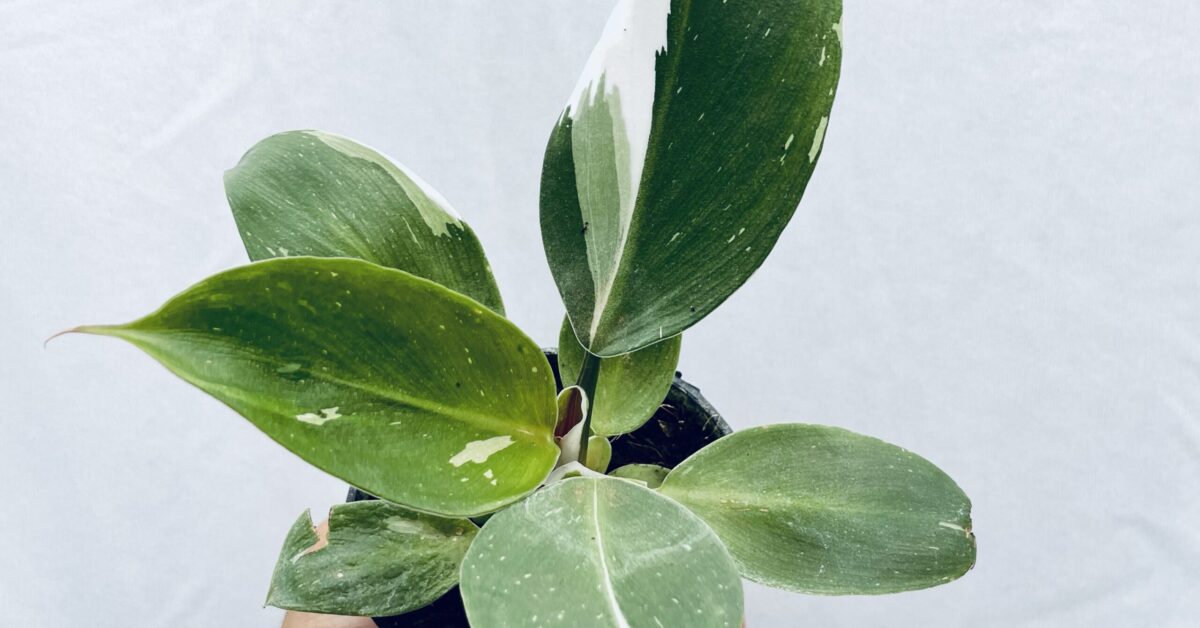
Native to South America, the Philodendron White Knight is a rare hybrid plant similar to the Pink Princess Philodendron.
Its distinctive feature is the white splotches on its green leaves, along with purple/cream-colored stems.
This slow-growing climbing Philodendron type can achieve a bushy appearance if you trim its stems every six months, creating a captivating picture of Philodendron that’s both elegant and unique.
15. Philodendron Hastatum
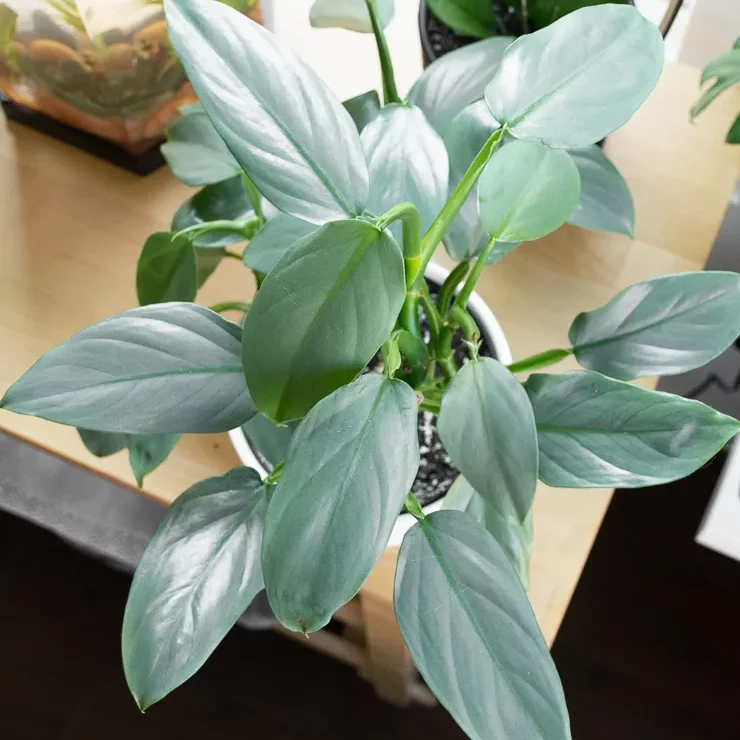
Also known as the Philodendron Silver Sword, this Philodendron type hails from Brazil.
Its elongated leaves exhibit color changes from green to grey or blue to grey as they mature, adding to its appeal.
This hanging or climbing Philodendron can be pinched back occasionally to maintain its shape and size.
Perfect for window sills away from direct sunlight, the Philodendron Hastatum showcases its vibrant foliage and creates a captivating picture of Philodendron that thrives in low-light environments.
16. Philodendron Elephant Ear
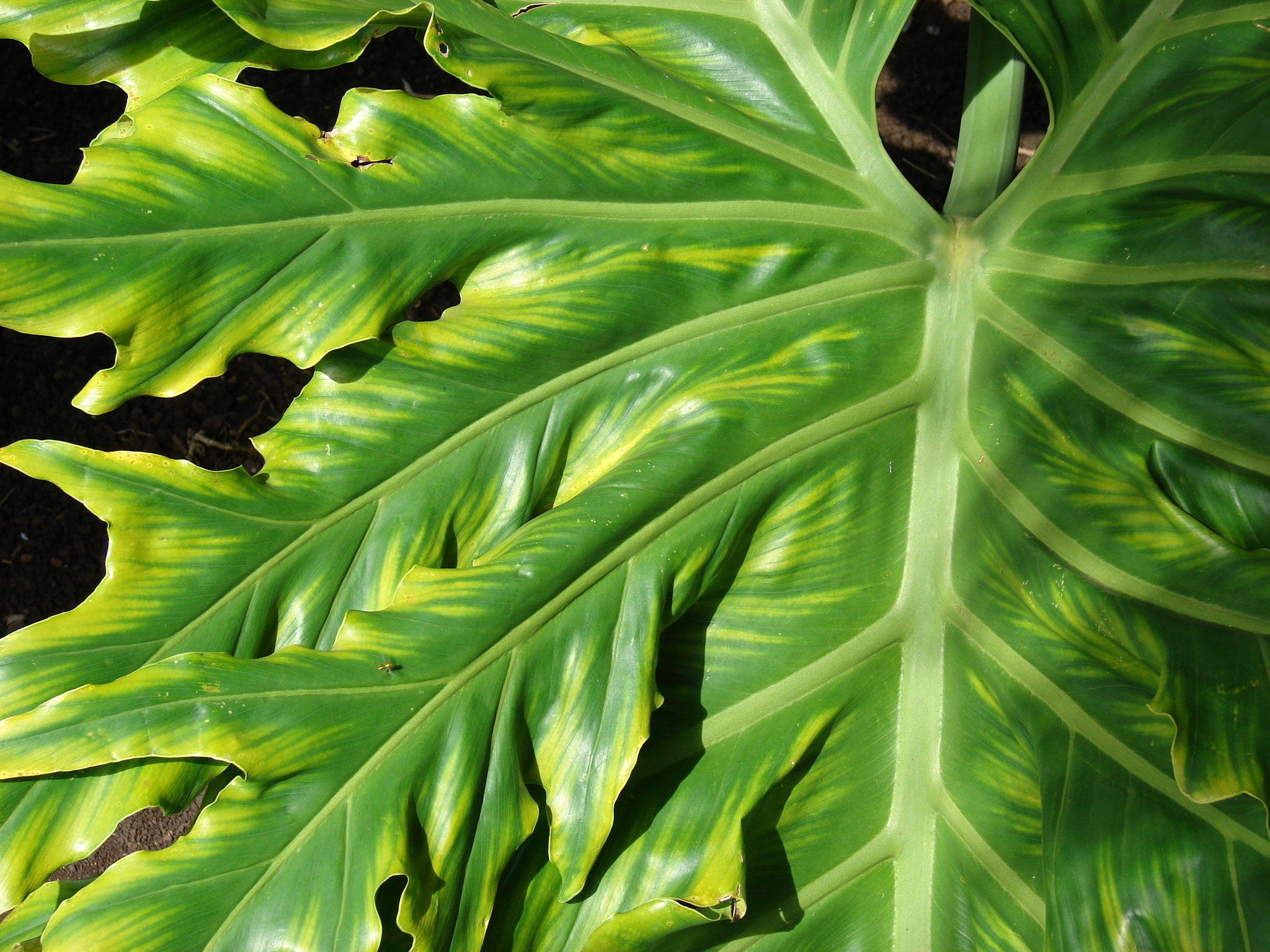
The Philodendron Elephant Ear is a robust plant that can transform any space into a tropical oasis, whether indoors or outdoors.
This versatile Philodendron can grow up to four feet tall and three feet wide, making it a perfect choice for containers or larger indoor areas.
Its preference for indirect sunlight makes it adaptable to various settings.
When placed indoors, watering once a week is sufficient, while outdoor plants can benefit from natural rainfall.
Its lush, tropical appearance adds an exotic touch to any room, creating a captivating picture of Philodendron that exudes a sense of tropical paradise.
17. Fiddleleaf Philodendron
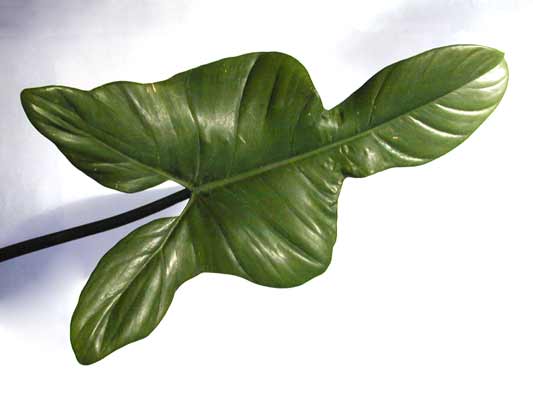
Originating from the rainforests of Bolivia, Argentina, Paraguay, and West Brazil, the Fiddleleaf Philodendron brings a touch of the tropics to your indoor space.
With long, fibble or horse-shaped leaves measuring 15-30 cm, this Philodendron makes a striking impression.
To prevent it from flopping, you can secure it with a stake. The Fiddleleaf Philodendron is a fantastic addition to your plant collection, boasting its lush and exotic appearance.
Its botanical name, Philodendron bipennifolium, is a testament to its unique features.
By incorporating this stunning Philodendron into your indoor space, you can create a captivating picture of Philodendron that evokes the lushness of tropical rainforests.
Care Measures
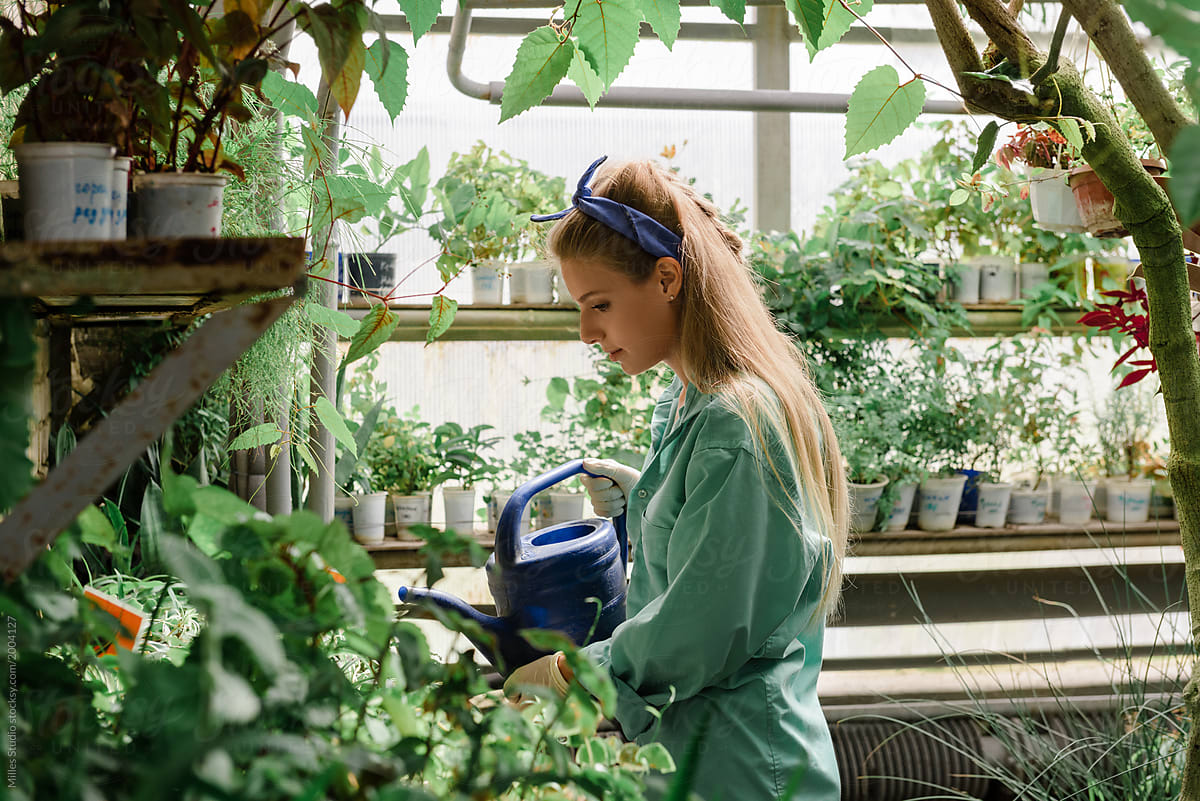
Few necessary care measures to follow for healthy Philodendrons are light requirements, soil mix in pots, water a philodendron, temperature conditions, and fertilization of philodendrons.
1. Light Requirements for Healthy Philodendrons
The first and most crucial step is the light requirement. All philodendrons favor medium to bright light.
Ensure that they are placed away from direct sunlight. Some philodendrons which have darkly shaded and colored leaves favor low light.
Variegated philodendron plants require bright light. Before buying a philodendron, one needs to choose the type based on the place’s surroundings wisely.
2. Soil Mix in pots for Philodendrons
Choose pots with soil that has excellent drainage and can hold some moisture. A perfect potting mixture of peat moss, perlite, and potting soil should create the perfect medium for Philodendron plants to thrive indoors.
Water poured, or rainwater should come out from the pots through the holes. Still, the soil must be moist while watering.
3. The Perfect Way of Watering Philodendron
Constantly water the philodendron indoor plant when the top layer of the soil is dried. Never overwater the plant.
While watering green leafy Philodendron, ensure that it is entirely soaked in the soil.
By doing this, roots get enough water for a longer time before being waterlogged.
Watering the plant when the soil is partly dry can protect the plant from fungus gnats. Use fresh water while watering to prevent any diseases.
4. Temperature and Humidity for Philodendrons
Philodendrons from tropical and sub-tropical regions require a considerable amount of humidity.
Ensure that pot is placed in an excellent humid place indoors. One can mist the leaves for healthy plants.
Average room temperatures are suitable for the healthy growth of these philodendrons.
The temperature should be between 65 degrees Fahrenheit to 80 degrees of Fahrenheit. Cool climatic philodendrons do not require these care measures.
5. Fertilization for Healthy Philodendron
The best fertilizer is a liquid fertilizer with both micro and macronutrients. Ensure that fertilization is done once a month between the summer and spring season.
These two seasons are growing seasons of philodendrons. Never fertilize the indoor philodendrons during the fall and winter seasons.
At that time, there will be no growth of philodendron plants.
6. Healthy Food
Proper food and healthy food to be given at the correct time and season.
Feed your Philodendron monthly in the spring and summer with a basic houseplant food diluted to half the recommended strength.
7. Toxicity
Philodendron plants are poisonous to animals and human beings. Some leaves release white-colored liquid when you press them.
Please be away from plants while pruning, cleaning plants. Typically, ingestion will result in swelling of the lips and tongue and stomach irritation with possible vomiting.
Wash the leaves frequently to protect them from any fungus or dust which can destroy the whole plant. 24/7 care is required for the healthy growth of Philodendron.
These beautiful philodendrons, which can change the landscape indoors by giving a new and attractive view, can be purchased online or at garden centers.
Whenever you buy this kind of plant, all the above steps need to follow.
Never neglect for one day too, which might end the life of a plant. Plants are essential to our lives. Protect plants, and they will protect you.
Conclusion
In conclusion, Philodendron plants offer a remarkable range of diversity and beauty, making them a popular choice for both indoor and outdoor spaces.
This comprehensive guide has delved into various types of Philodendrons, each possessing unique characteristics that contribute to their captivating appeal.
From the Green Heartleaf Philodendron’s charming heart-shaped leaves to the vibrant patterns of the Philodendron Brasil, and the captivating iridescence of Philodendron Micans, these plants add lushness and vibrancy to any environment.
Philodendron Xanadu and Philodendron Pink Princess offer elegance and color, while the Lacy Tree Philodendron and Naugahyde Philodendron boast distinctive textures and patterns.
The provided care measures emphasize the importance of light, soil, watering, temperature, and fertilization to ensure the health and longevity of your Philodendron plants.
These measures are crucial, as Philodendrons are not only beautiful but also toxic to humans and animals, making proper care essential.

